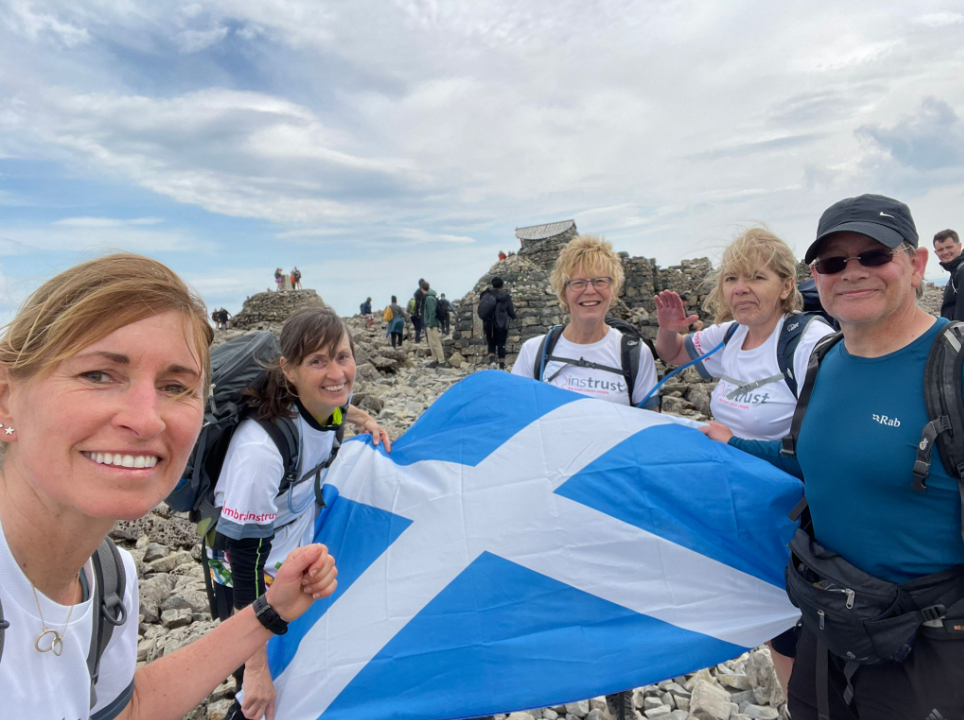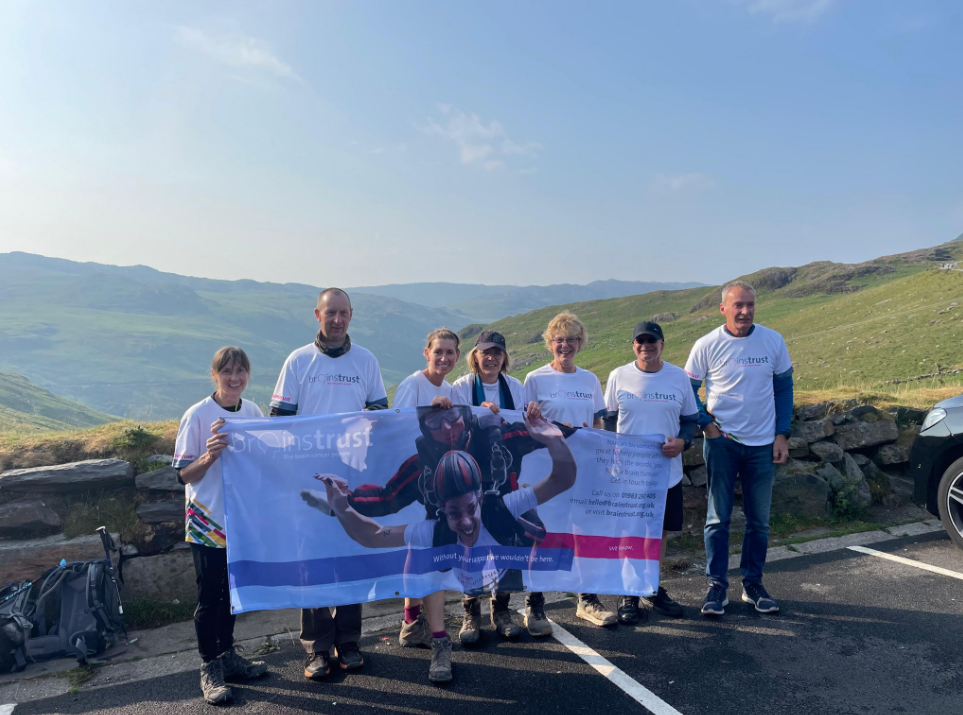On 17 June, Helen and her team of ‘Peaky Bounders’ took on the UK 3 peaks challenge. The team set out to hike the UK’s 3 highest mountains in under 24 hours. They took on this epic challenge to raise vital funds for brainstrust, in this article Helen shares more about what motivated them to take on the challenge and how it went.
The National 3 Peaks Challenge has always been on my bucket list but somehow I had never got round to doing it. Then last year my 23-year-old son did it and I realised if I was going to do it, it needed to be soon! I turned 60 in February so I decided to make it into a birthday celebration.
to doing it. Then last year my 23-year-old son did it and I realised if I was going to do it, it needed to be soon! I turned 60 in February so I decided to make it into a birthday celebration.
This has not been a trivial challenge for me to complete. 25 years ago I climbed Snowdon for the first time and I fell and broke my arm. If I had fallen off a ledge close by then I would not be here to tell my story. This challenge meant facing the fear of falling again. During our training, I climbed Snowdon for the first time since the accident, and then again during the challenge itself.
Walking for brainstrust
We chose brainstrust after one of our original walking team told us about his brother-in-law and how he recently had a brain tumour removed. The tumour and treatment had resulted in him experiencing character change and virtual blindness. This chap went from being Head of PE in a local school to being an invalid and needing a guide. He and his family struggled to get support so brainstrust seemed appropriate; by fundraising we could help make sure others get the support they need. Also, one of our guides works to support people with brain injuries to get legal help. We are overwhelmed by the contributions that people have made, and have heard so many personal stories about others who have suffered from brain tumours.
Preparing for the hike



We did loads of training, visiting the mountains of North Wales and the Lake District every couple of months and increasing the scale of the challenge each time. We were motivated by our team dynamic and the fantastic scenery that we experienced.
When we set off, we knew that we were as ready as we could be!
Along with our training, we also did a lot of logistical planning. We chose to have a large minibus so that we had plenty of space and found two willing drivers. We’re so grateful to the drivers who were very organised and provided invaluable support. Not only did they drive, they heated up hot food for us after each mountain – a much better way to fuel ourselves!
Taking on the challenge
Ben Nevis was like Piccadilly Circus when we set off meaning we got delayed on the trek by other slower walkers. Even so, we managed to complete our first mountain in 5 hours 15 minutes, well within our target. Then we went straight onto Scafell Pike which we climbed at 7.30 pm – it was a beautiful experience as the sun went down. We drove through the night to Snowdon which we started at 4am so we could get back down by 8.08am.
In the end we completed the challenge in 23 hours 45 minutes which we were thrilled with!
We’d like to say a huge thank you to Helen and the Peaky Bounders for taking on this incredible challenge. Their commitment to training and the grit and motivation required to get up the final mountain at 4am is truly inspirational. So far, the fab team has raised over £3,000 for brainstrust – this money will go directly towards ensuring people diagnosed with a brain tumour have the support they need to live their best life possible after their diagnosis. You can see Helen’s fundraising page here.
Feeling inspired? Find out more about how you can fundraise for brainstrust here.










